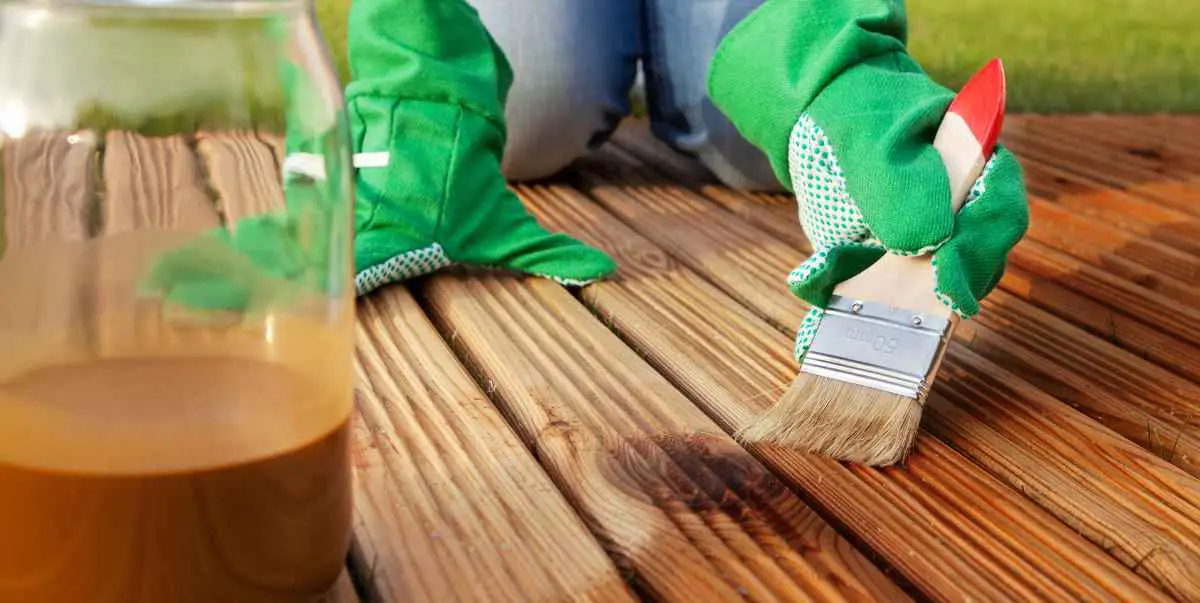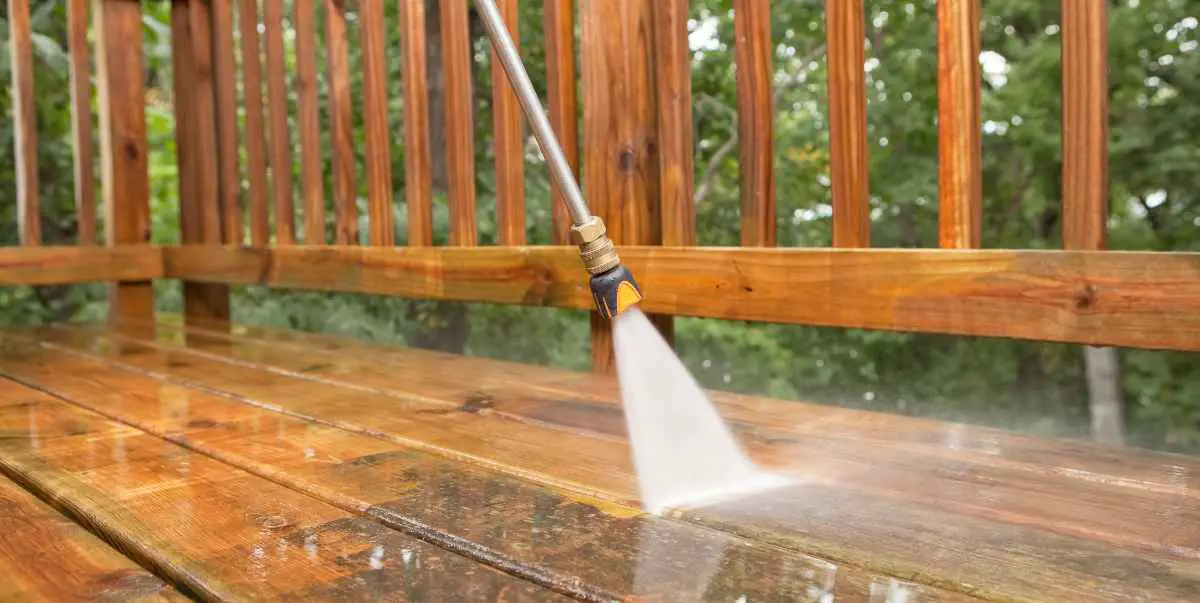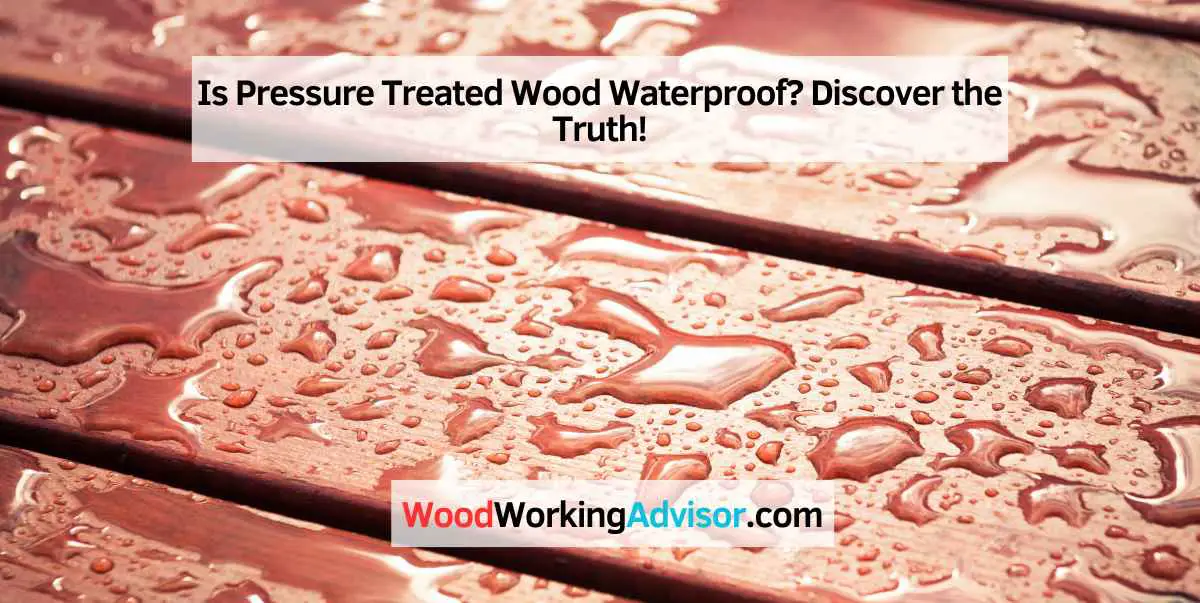Yes, pressure treated wood is waterproof. Pressure treatment involves injecting a preservative into the wood, which helps protect it from rot, decay, and insect damage.
This process creates a barrier that prevents water from penetrating the wood, making it resistant to moisture-related problems. Pressure treated wood is commonly used for outdoor projects such as decking, fences, and outdoor furniture. It is an excellent choice for areas where water exposure is likely, as it helps extend the lifespan of the wood and reduces the need for frequent maintenance.
Overall, pressure treated wood offers durability and protection against water damage, making it a reliable option for various outdoor applications.
What Is Pressure Treated Wood?
Pressure treated wood is a type of lumber that has undergone a special treatment process designed to enhance its durability and resistance to various environmental factors. This process involves impregnating the wood with chemical preservatives, which are forced deep into the fibers under high pressure. By doing so, pressure treated wood is protected against decay, insect damage, and fungal growth, making it ideal for outdoor construction projects and applications where the wood will be exposed to moisture, soil, and other potentially damaging elements.
How Pressure Treated Wood Is Treated
To understand how pressure treated wood is treated, it’s important to know that the treatment process involves the use of preservatives. These preservatives are typically composed of chemicals such as copper-based compounds, which have proven to be effective in protecting the wood against decay and insect infestation.
The treatment process begins by placing the wood in a large treatment tank, which is then sealed to create a pressurized environment. Once sealed, the tank is filled with the preservative solution, and pressure is applied to force the solution deep into the wood fibers. The pressure forces the preservative to penetrate the wood, ensuring that even the innermost layers are fully treated and protected.
Types Of Pressure Treated Wood
There are different types of pressure treated wood available, each suitable for particular applications. Here are a few common types:
- ACQ (Alkaline Copper Quaternary): This type of pressure treated wood uses copper and a quaternary compound as the preservatives. ACQ-treated wood is widely used for outdoor applications such as decking, fencing, and retaining walls.
- CA-C (Copper Azole Type C): CA-C-treated wood is another popular choice for outdoor projects. It uses copper and azole as the preservative agents, providing excellent protection against decay and insects.
- Creosote: Creosote-treated wood is a heavy-duty option often used for industrial applications such as railroad ties, utility poles, and marine structures. It is extremely durable and resistant to moisture.

Is Pressure Treated Wood Water Resistant?
Pressure treated wood is a popular choice for outdoor projects such as decks, fences, and landscaping structures. One of the common questions people have is whether pressure treated wood is water resistant. In this article, we will explore the water resistant properties of pressure treated wood to help you understand its durability and suitability for various applications.
Understanding The Water Resistant Properties Of Pressure Treated Wood
Pressure treated wood undergoes a special treatment process that involves infusing preservatives deep into the wood cells. This treatment helps protect the wood against various threats, including decay caused by exposure to moisture, insects, and fungi. But does pressure treated wood repel water?
The answer is not a straightforward yes or no. While pressure treated wood is indeed more resistant to water compared to untreated wood, it is not entirely waterproof. The treatment process significantly enhances the wood’s ability to withstand moisture-related damage, but it is important to be aware of its limitations.
Factors Affecting Water Resistance
The level of water resistance in pressure treated wood can vary depending on several factors. It is essential to understand these factors to make informed decisions when using pressure treated wood for water-exposed projects. Some significant factors that can influence the water resistance of pressure treated wood include:
- The type of wood species used: Different types of wood have varying natural characteristics that can impact their resistance to water. Some wood species naturally have higher water resistance properties than others.
- The quality of pressure treatment: The effectiveness of the pressure treatment process can vary depending on the quality of the treatment and the penetration of the preservatives into the wood cells. Properly treated wood will have better water resistance.
- Maintenance and care: Regular maintenance, such as sealing the wood with an appropriate sealant, can help enhance its water resistance and overall durability. Proper care, including avoiding standing water and ensuring proper drainage, can also contribute to better water resistance.
While pressure treated wood is designed to withstand moisture exposure, it is crucial to keep in mind that no wood is entirely impervious to water. Therefore, it is still essential to take precautions and provide appropriate maintenance to ensure the longevity and performance of pressure treated wood in wet or damp environments.
Is Pressure Treated Wood Waterproof?
Pressure treated wood is a popular choice for outdoor projects due to its increased durability and resistance to decay. However, many people wonder if pressure treated wood is truly waterproof. In this article, we will explore the difference between water resistant and waterproof and test the waterproofing ability of pressure treated wood.
Difference Between Water Resistant And Waterproof
It is important to understand the distinction between water resistance and waterproofing when it comes to pressure treated wood. While these terms may seem similar, they have different meanings.
- Water resistant: Water resistant materials can resist the penetration of water to some degree, but they are not completely impervious to water. They may offer some protection against moisture, but prolonged exposure or submersion may still cause damage.
- Waterproof: Waterproof materials, on the other hand, are designed to completely repel water and prevent its entry. They provide an effective barrier against moisture, even during extended exposure or submersion.
Testing The Waterproofing Ability Of Pressure Treated Wood
To determine whether pressure treated wood is truly waterproof, various tests have been conducted to evaluate its performance when exposed to water. These tests involve subjecting the wood to different water conditions and observing its behavior.
- Visual inspection: The first test involves visually examining the pressure treated wood after prolonged exposure to water. If the wood shows signs of water absorption, such as swelling, warping, or discoloration, it may indicate that it is not completely waterproof.
- Water absorptivity test: In this test, the weight of the pressure treated wood is measured before and after it is submerged in water for a specific period. If there is a significant weight gain, it suggests that the wood has absorbed water and is not fully waterproof.
- Water droplet test: Another test involves placing water droplets on the surface of the pressure treated wood and monitoring how they behave. If the droplets bead up and roll off the surface, it indicates that the wood has a good level of waterproofing. However, if the droplets are absorbed or spread out, it suggests that the wood is not adequately waterproof.
Based on these tests, pressure treated wood can offer a certain level of water resistance, but it is not completely waterproof. While the chemicals used in the pressure treatment process help to enhance its durability and protect against decay, prolonged exposure to water can still cause damage over time. To ensure the longevity of pressure treated wood, it is recommended to apply a water repellent finish or sealant to provide an extra layer of protection against moisture.
How To Enhance The Water Resistance Of Pressure Treated Wood?
Pressure treated wood is known for its durability and resistance to rot and decay. However, while it offers some level of moisture protection, it is not completely waterproof. Thankfully, there are ways to enhance the water resistance of pressure treated wood. By applying water sealants and stains, as well as regularly maintaining and caring for the wood, you can ensure it remains protected against water damage. Let’s explore these methods in more detail:
Applying Water Sealants And Stains
One of the most effective ways to enhance the water resistance of pressure treated wood is by applying water sealants and stains. These products create a protective barrier on the surface of the wood, preventing water from seeping in and causing damage.
- Choose a high-quality water sealant or stain specifically formulated for pressure treated wood.
- Before application, ensure the wood is clean and dry.
- Apply the water sealant or stain evenly with a brush, roller, or sprayer, following the manufacturer’s instructions.
- Allow sufficient drying time before exposing the wood to moisture.
- Repeat the application annually or as recommended by the manufacturer to maintain optimal water resistance.
Regular Maintenance And Care
Regular maintenance and care are crucial for enhancing the water resistance of pressure treated wood and prolonging its lifespan. By following these steps, you can keep your wood in excellent condition:
- Inspect the wood periodically for signs of wear, such as cracks or splinters.
- Repair any damages promptly to prevent water from entering and causing further harm.
- Keep the wood clean by regularly removing dirt, debris, and leaves from its surface.
- Trim nearby vegetation to minimize shade and allow proper air circulation.
- Avoid placing objects directly on the wood, as they can trap moisture and lead to rot.
- Consider using protective covers or furniture pads to shield the wood from prolonged exposure to rain or snow.
To sum up, while pressure treated wood is not entirely waterproof, you can enhance its water resistance by applying water sealants and stains, as well as regularly maintaining and caring for it. By taking these measures, you can ensure the longevity and durability of your pressure treated wood for years to come.

Alternative Waterproofing Options For Wood
When it comes to protecting wood from water damage, pressure treated wood is widely used. However, despite its effectiveness, pressure treated wood is not completely waterproof. Moisture can still penetrate through the surface over time, leading to rot and decay.
Using Waterproofing Paints And Finishes
If you want to enhance the waterproofing capabilities of pressure treated wood, using waterproofing paints and finishes is a great option. These products are specifically designed to create a protective barrier that prevents water from seeping into the wood.
There are various types of waterproofing paints and finishes available in the market. Some are oil-based, while others are water-based. It’s important to choose a product that is suitable for your specific wood type and project requirements.
To maximize the effectiveness of waterproofing paints and finishes, it’s essential to follow the manufacturer’s instructions for application. Ensure that the wood surface is properly cleaned and dried before applying the product. Apply multiple coats for better protection, allowing sufficient drying time between each coat.
Benefits of using waterproofing paints and finishes:
- Creates a protective barrier against moisture
- Enhances the longevity of the wood
- Improves the appearance of the wood
Exploring Wood Alternatives With Built-in Waterproofing
Another option to consider is exploring wood alternatives that come with built-in waterproofing properties. These alternatives are specially engineered to have enhanced water resistance, making them ideal for outdoor applications where exposure to moisture is a concern.
| Wood Alternatives | Waterproofing Properties |
|---|---|
| Composite decking | Resistant to moisture, rot, and decay |
| Cedar | Contains natural oils that act as a waterproofing agent |
| Ipe | Dense and naturally resistant to water damage |
These wood alternatives offer a range of benefits over pressure treated wood, including better resistance to moisture, durability, and low maintenance requirements. However, they may come with a higher price tag, so it’s important to consider your budget when exploring these options.
In conclusion, while pressure treated wood is not entirely waterproof, you can enhance its water resistance with the use of waterproofing paints and finishes. Alternatively, considering wood alternatives with built-in waterproofing properties can provide long-lasting protection against moisture, ensuring the longevity and beauty of your outdoor wood projects.
Conclusion
To sum up, pressure treated wood offers some level of water resistance but it is not completely waterproof. While the treatment process adds a certain degree of protection against moisture, it is important to take extra measures such as applying a waterproof sealant to enhance its durability.
By understanding the limitations of pressure treated wood and implementing appropriate maintenance practices, you can ensure a longer lifespan for your outdoor projects.


